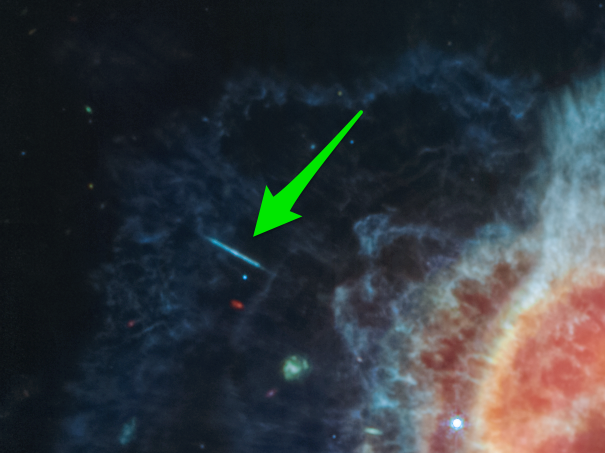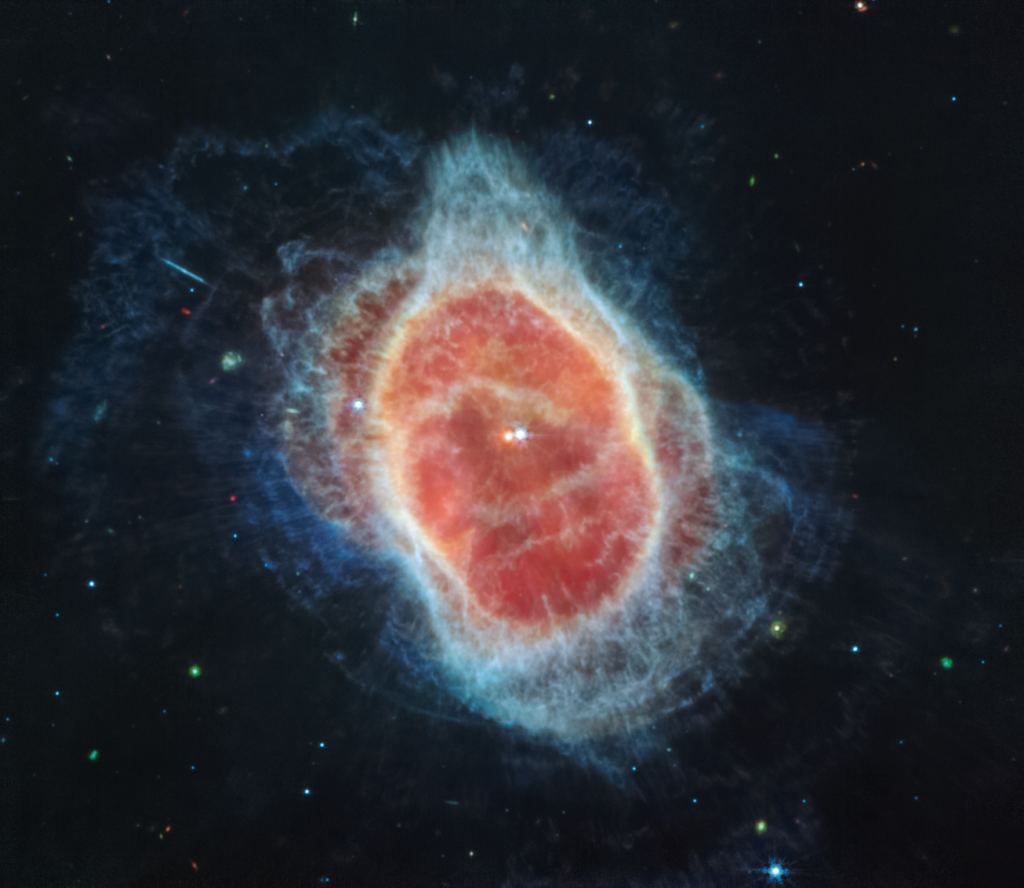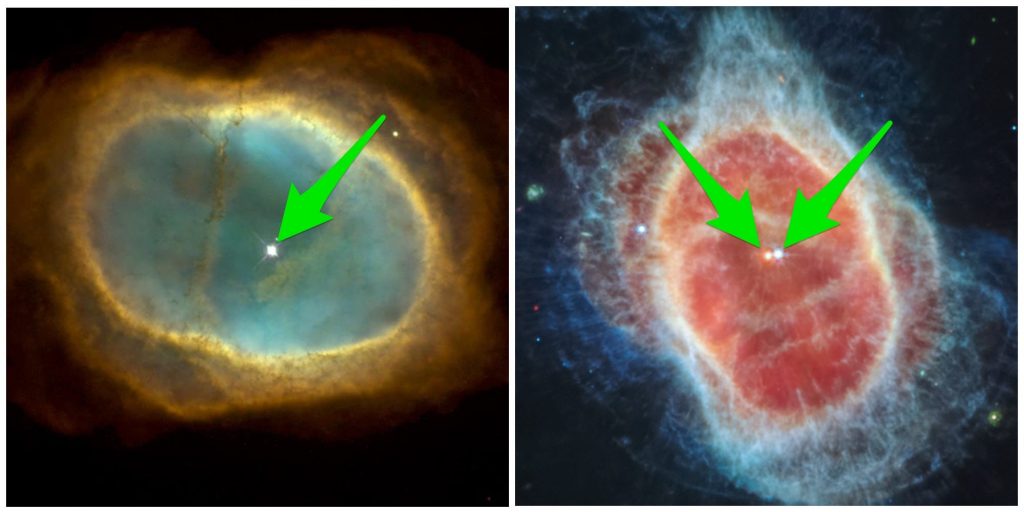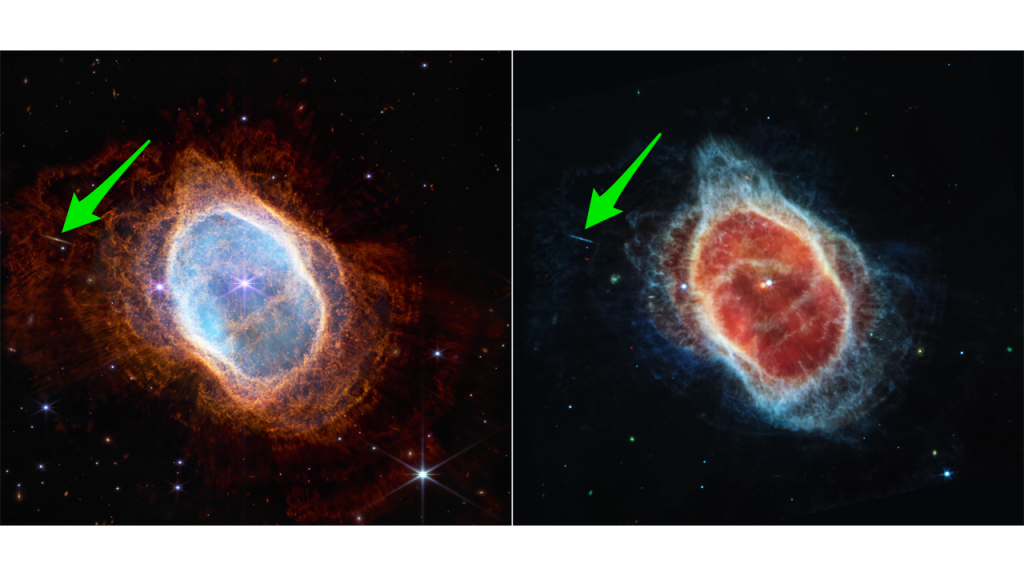- The James Webb Space Telescope's infrared gaze revealed a sharp image of the Southern Ring Nebula — and a galaxy behind it.
- On Tuesday, NASA released the deepest, clearest infrared images of the universe ever captured.
- JWST's first year of science operations, studying distant stars and galaxies, began last weekend.
NASA released two images on Tuesday, which the James Webb Space Telescope captured of the Southern Ring Nebula, an enormous cloud of dust and gas 2,000 light-years away from Earth.
Webb's infrared gaze, which helps it peer through the nebula's cosmic dust, also revealed something that hadn't been seen before: a side view of a faraway galaxy lurking in the background of the photo.

"I made a bet that said 'It's part of the nebula,'" said Karl Gordon, a NASA astronomer, during the image reveal. "I lost the bet, because then we looked more carefully at both Nircam and MIRI images, and it's very clearly an edge-on galaxy." Because Webb is viewing the galaxy's edge, it appears like a long, blueish thin line in the upper left of the image. When seen from this perspective, astronomers can study how stars are distributed throughout a galaxy.
Webb scientists have yet to provide additional information about the galaxy that photobombed the Southern Ring Nebula. "Wow. Wow. This. This near infrared image is — wow," Alex Lockwood, a project scientist, said as she shared the nebula's two new images on Tuesday.

Often described as the successor to the Hubble Space Telescope, Webb launched on December 25, 2021, after more than two decades of development. Since that time, the $10 billion telescope has traveled more than 1 million miles from Earth and is now stationed in a gravitationally stable orbit, collecting infrared light. By gathering infrared light, which is invisible to the human eye, Webb is able to cut through cosmic dust and see far into the past, to the first 400 million years after the Big Bang.
In order to showcase the telescope's capabilities and show the telescope is finally up and running, NASA debuted its first batch of full-color images. The powerful telescope captured two separate views of the Southern Ring Nebula, both in mid-infrared and near-infrared light.
The Southern Ring, or "Eight-Burst'' nebula, is a vivid shell of gas and dust expelled into space by a dying star.
"As the star is dying, in its last dying throes, it starts to shake. It pulsates. And at the end of that, poof, it comes out," Klaus Pontoppidan, JWST's project scientist at NASA's Goddard Space Flight Center, told reporters after unveiling the images. "So you see what the star did just before it created this planetary nebula. I find it fascinating because it's like geological layers, and you can see the history of its last moments."

The new imagery not only shows that dying star in greater detail, but also revealed a second star, gravitationally bound to it, which was previously shrouded from view. Astronomers said studying the once hidden stars in detail will help them understand how they shape the gas and dust cloud.
Over the weekend, JWST's team started its first year of normal science operations. "Today, the Webb mission is open for scientific business," Michelle Thaller, assistant director of science communication at NASA's Goddard Space Flight Center, said, adding, "And the best is yet to come."
